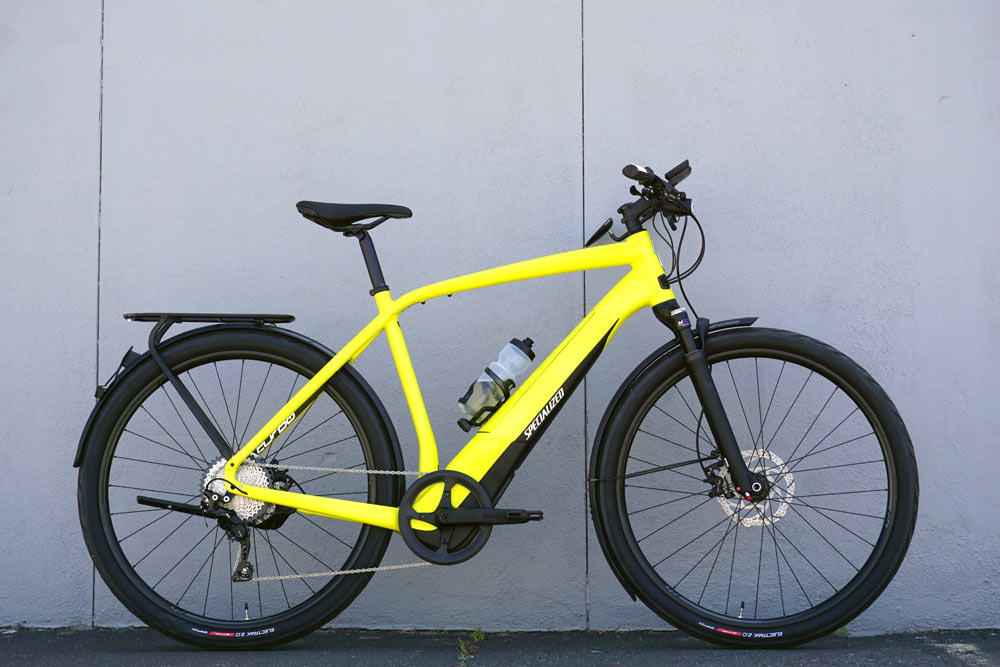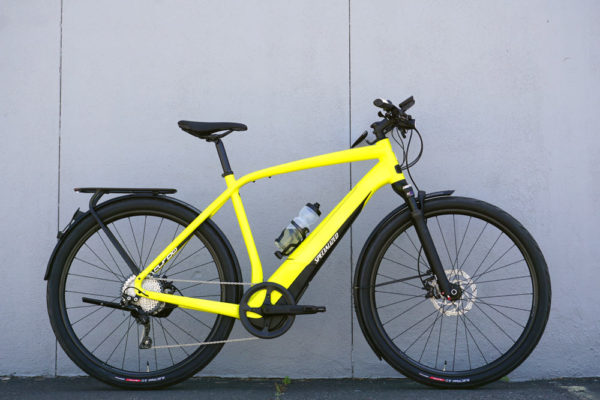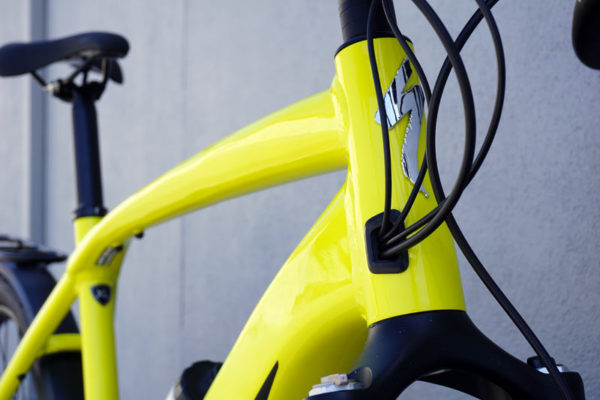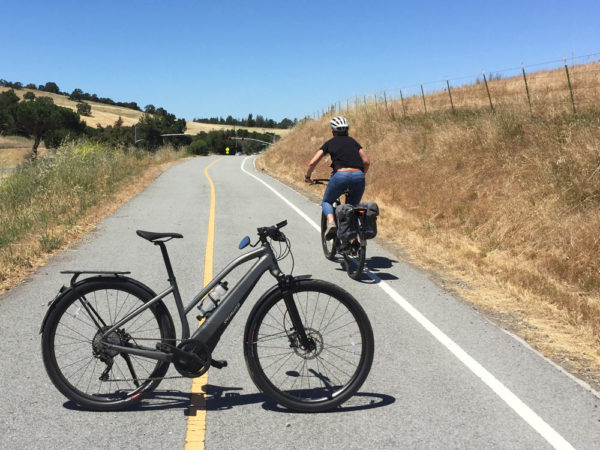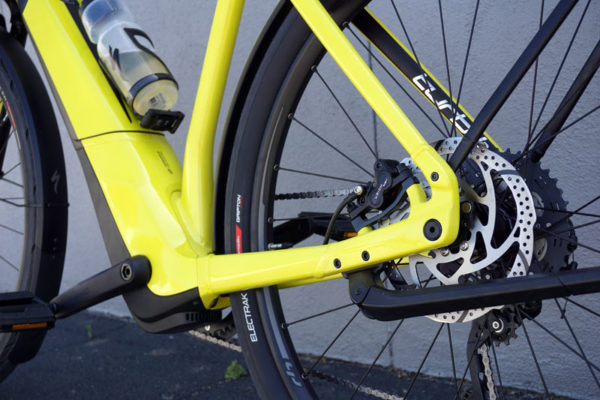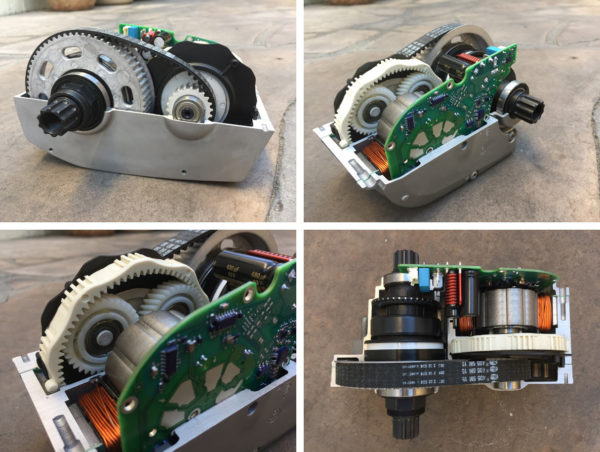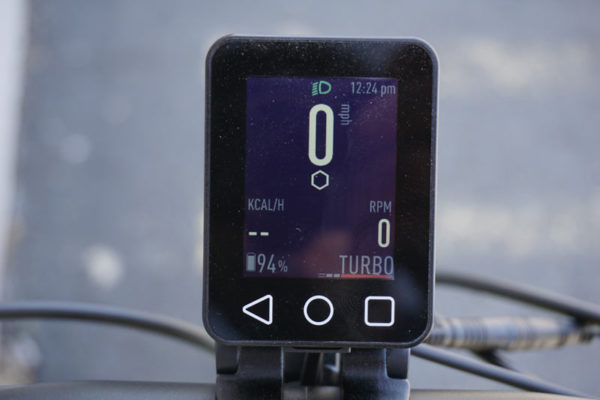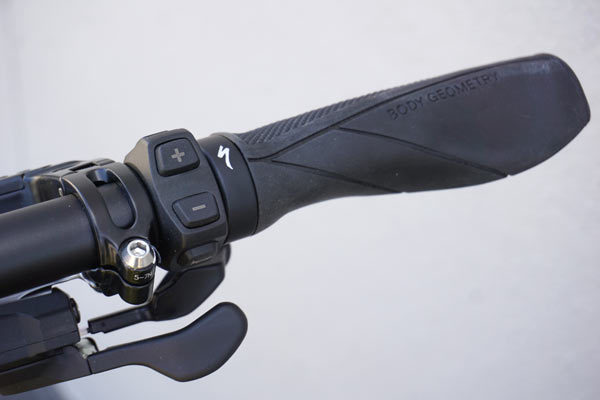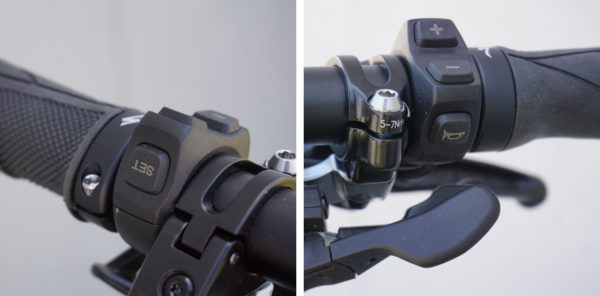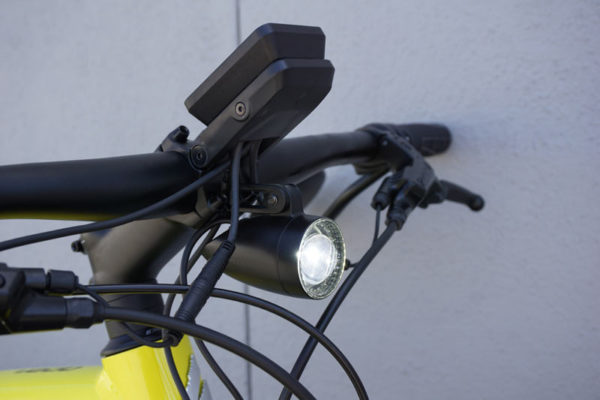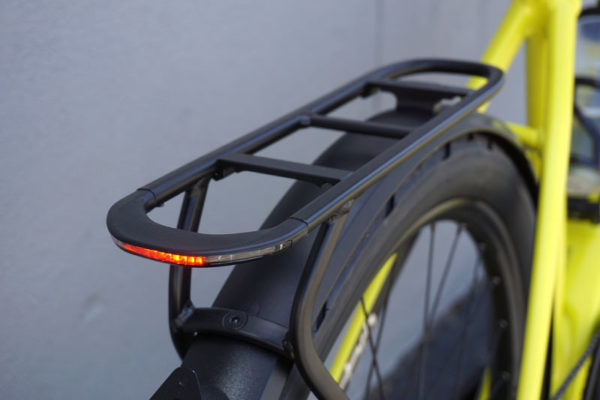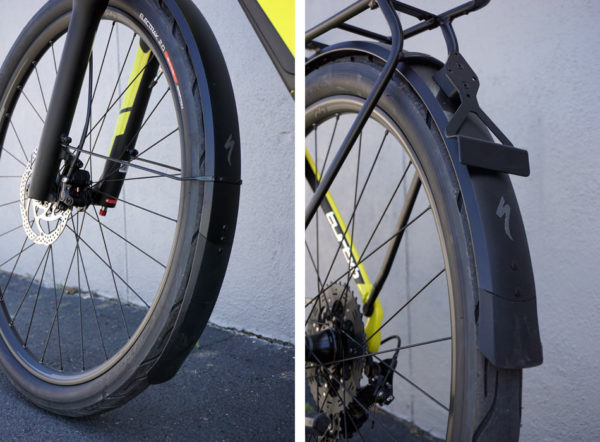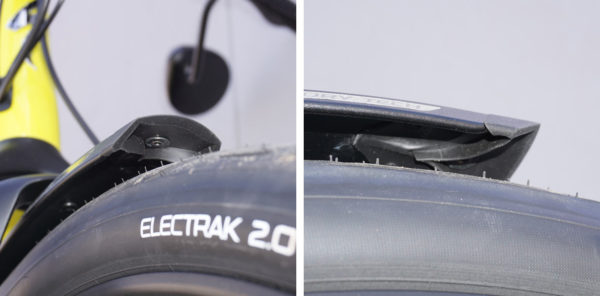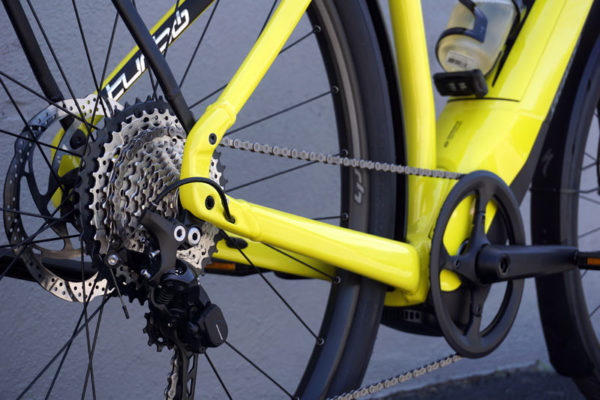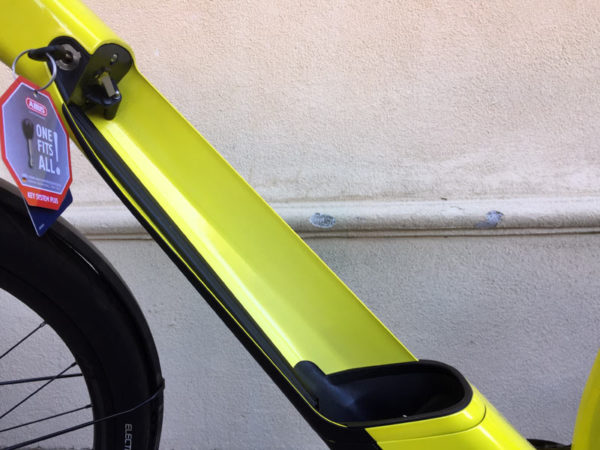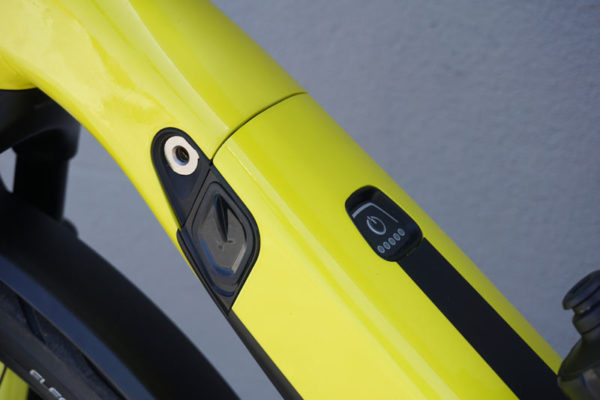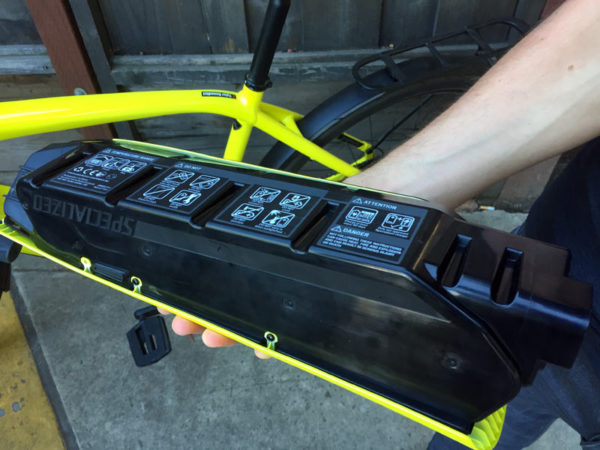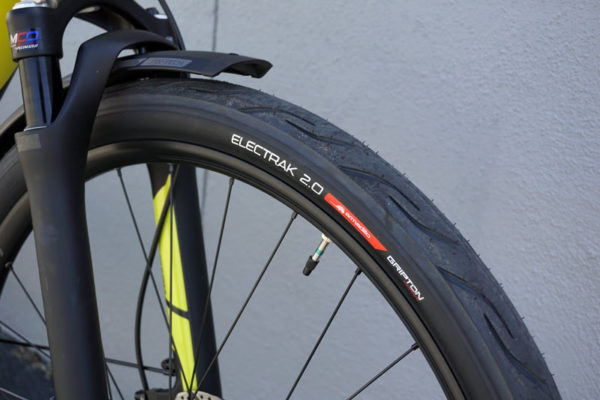The all-new 2017 Specialized Turbo Vado is their next generation of pedal assist e-bike. The original Turbo S started development in 2010. It was introduced in 2012 and changed the perception of what e-bikes could (should) look like. It did this by integrating the battery and motor, and that racing red paint scheme didn’t hurt either. Then it came to the U.S., and then it got upgraded. Most recently, in 2015, they introduced the Turbo Levo e-mountain bike, which we had way more fun on than expected.
Now, they’ve built off everything they’ve learned from those two bikes to create the Turbo Vado line…
The idea is that it’s a bike first, it just happens to have a motor to help you cover more ground and maybe do that a little faster and a little easier. They wanted something that handled and rode well, where the assistance, motor and battery disappeared underneath you, and you just have fun riding a bike.
It’s designed around urban riding, commuting and fitness. Geometry is based on their Body Geometry fit data accumulated over more than a decade of research. The numbers lay out to make it very stable and comfortable, aided by a full suite of Body Geometry touchpoints spec. The motor and battery are kept as low as possible to further improve stability and optimize the weight balance and center of gravity.
What’s New
For the first time, they’re offering a step-thru frame for women. It gets female-specific Body Geometry saddle, grips and other parts. They wanted to maintain the ability to remove the battery so you could keep it safe or just lighten it up for carrying up stairs. This required a new battery-to-frame interface that lets the battery pull out at a 45º angle. It comes with an Abus-designed lock-and-key to secure the battery into the frame.
The biggest structural difference is the switch to a “mid engine” design. The motor moves from the rear hub to the bottom bracket, which lets them use a standard rear wheel and cleans up the appearance quite a bit.
Because it’s fully integrated, they designed air ducts into the shell, which channels air over the motor to cool it, then vents it out the back.
You have control over the system via their BLOKS cycling computer. Two versions will be offered, a standard LCD and a higher end TFT touch screen version. It slots into a wired connection to link it into the bike’s electronics, but uses Bluetooth to connect with the Turbo Vado Mission Control App on your phone.
It also connects to a smaller handlebar remote for quick changes in the assist level. The top models replace the bell with a hidden electric horn, which is awesome.
A new headlight uses an aspherical lens to cast a broad, even beam pattern. Designed in conjunction with a motorcycle headlight manufacturer, it comes in 300 and 600 lumen options depending on which model Vado you buy.
Out back, the tail light is integrated into the rear rack and is ultra sleek. On the top two models, it’s tied into the brake levers, too, acting as a brake light when you’re slowing or stopping. The base level Vado 2.0 will have a light built into the saddle since it doesn’t get the rack.
Overall, the Vado is lighter by about 1.5kg (3.3lb). They actually saved more than that by switching to larger battery cells, which meant they could use fewer total cells, and optimizing the frame design to pull out weight. But, the tires are wider and meatier, which adds a little weight back. A fully equipped top of the line Vado 6.0 comes in around 51.8lb (23.5kg).
What’s Standard
Full coverage fenders front and rear with integrated rear rack, integrated head and tail lights, and full custom electronics, battery and motor system. The fenders are shaped not just for maximum water protection, they’re also shaped to optimize aerodynamics. Yes, they took them (and some water) into the Win Tunnel to see how they would block water at speed:
The lower section of the front fender is flexible (called a Flextender) so it can bend if you drop off a curb and hit it, but not so floppy that it moves when you’re riding fast. Even better? They added a rubberized “dam” to the underside of front fender’s nose. Why? Because the wheel’s rotational direction tends to want to shoot water off the front, which then sprays up into your face. With the dam, as water runs up the inside of the fender, it hits the dam and is pushed out to the sides. Simple, brilliant.
The rear fender and rack were created together, and the fender is a structural element that gives the rack a 20kg (44lb).
The frame is made of their E5 alloy custom shaped to integrate all of the electronics. It incorporates additional mounts on the rear triangle and the fork to accommodate most any type of bag or rack system you want to add. There’s also water bottle cage mounts on the top of the battery case, plus an additional set of cage mounts under the top tube on the standard frame…which, technically, are there to mount a lock to. The battery is not a structural element, but the motor case is…which is a little different than what you find on frames using 3rd party bolt-on motor systems. So, they don’t need to over build the frame then add a motor’s weight, it can all be created together to save weight and make it look better.
Like the original Turbo, they developed the entire power system in house because they wanted complete control over the design. This not only let them fully integrate it into the bike’s sleek design, it also let them customize the function. It’s quiet, very smooth, and it decouples when you’re pedaling faster than it’s helping. This last part is important because it means if you’re not using the assist (or you run the battery dry), you’re not pushing against any resistance from the motor. So, it’ll feel like you’re pedaling a regular bike if you want…or if you’re pedaling it faster than the system’s top speed.
It comes in four versions, two each with the two different motor-and-battery combos, offering up to 320% support with up to 90Nm torque. The motor itself is the same as what’s in the Levo, but the software is retuned for street riding. The 250 watt Turbo 1.2 Motor goes in bikes that top out at 20mph, and the 350 watt Turbo 1.2 S gets to a 28mph top speed. The level of assist for each setting (Eco, Sport, Turbo) can be customized via their Mission Control mobile app. The App also ives you motor and battery diagnostics, lets you update the firmware, and more. Smart Control, which came out with the Levo, will be coming soon and let you set your ride time or distance and let the bike figure out how much assist to provide such that the battery lasts for the duration of your ride. Range anxiety? Gone. Mission Control is available for iOS and Android and should hit both app stores just before the bike starts shipping on June 1.
They considered using the app to add theft deterrence, but decided against letting the app lock the motor and shut the bike down. Why? Because your phone battery could die, servers can crash, or other bugs can prevent it from working correctly, which would leave you stranded. However, you can let the app know if the bike has been stolen and it will help you locate it. The app will also be adding navigation soon, letting you type in the destination, and then the TFT BLOKS cycling computer will offer turn-by-turn directions.
The battery has a custom power management software system to maximize its performance and lifespan. The coding for this was done by some of the same minds behind Apple computer power management. It uses 40 custom Li-Ion cells that provide up to 41 miles of range in Sport mode (28 miles on the 28mph Class 3 Vado 3.0/5.0/6.0 models, and 41 miles for the 20mph Class 1 Vado 2.0). Use a lower assistance level and you can more than double that range. Or get the higher end bikes with the 604Wh battery and you’ll get even more. Start out with the base model’s 460Wh battery and you can upgrade later, too. Charge times are about 4-6 hours, depending on battery model.
The bikes will get Specialized Electrak tires with Gripton rubber and Armadillo casings for both puncture protection and support to handle the extra weight. The bike can fit up to a 52mm wide tire with the fenders attached. Or remove the fenders and go a little bigger or add some knobbies to take it off the pavement. Brakes are TRP; cassette, rear derailleur and shifters are Shimano. Look for a later post with full spec lists and model details.
Market & Legality
From a federal standpoint, both the Class 1 E-Bike (20mph max assist) and Class 3 E-Bike (28mph max assist) are legal and considered a bicycle, so long as you have to pedal for the motor to kick in. AKA, “pedal assist”. But then you’ve got state and city laws that might vary. Some places restrict the top assist speed, and some restrict where you can ride it. Specialized is working with the industry to more clearly define what types of e-bikes there are (a Class 2 E-Bike has a 20mph max assist, but has a throttle and doesn’t require any pedaling). For now, local laws are going to vary, but rest easy knowing that the industry is working hard to provide standardized guidelines. You can keep up with the latest legislation and see charts showing the wheres, whats and hows at PeopleForBikes.org. As far as Specialized’s opinion goes, they’re bicycles, and they say there seeing a lot of very positive momentum in most every state…and even in New York City, which currently bans any sort of e-bike.
Stay tuned for video coverage of the bike and a complete spec/model list.
